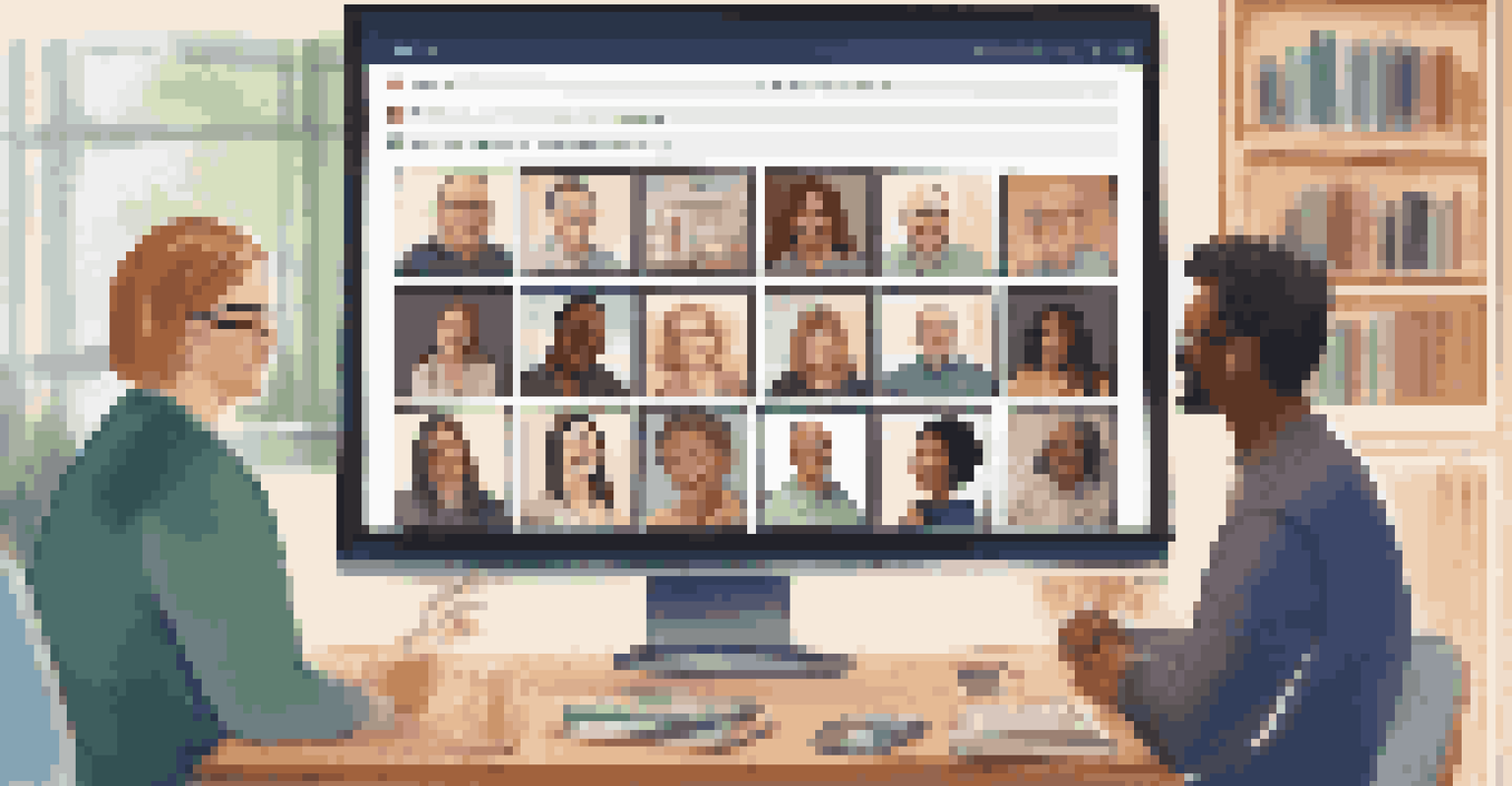The Role of Social Networks in Community Health Resource Access

Understanding Community Health Resources and Their Importance
Community health resources, such as clinics and educational programs, play a vital role in promoting public health. These resources provide essential services that address health disparities within communities. By understanding the types of resources available, individuals can better navigate their health journeys and access the support they need.
The greatest medicine of all is to teach people how not to need it.
Accessing these resources can be challenging, especially for underserved populations. Factors like location, awareness, and socio-economic status often create barriers. Social networks can help bridge these gaps by spreading information and fostering connections among community members.
By leveraging social networks, communities can create a more informed public that knows how to utilize available health resources. Increased awareness and access lead to healthier communities, as individuals are empowered to seek the care and information they need.
The Impact of Social Media on Health Resource Awareness
Social media platforms have revolutionized how we share and receive information about health resources. With a simple post or tweet, vital information about clinics, support groups, and health programs can reach thousands. This instant access can significantly increase awareness within communities, particularly among younger demographics.

For instance, a community health center can announce free vaccination clinics on platforms like Facebook or Instagram, attracting a larger audience. The interactive nature of social media also allows for real-time engagement, where individuals can ask questions and share their experiences.
Community Resources Promote Health
Understanding and utilizing community health resources are essential for addressing health disparities and empowering individuals in their health journeys.
Moreover, social media can help dispel myths and misinformation about health resources. By encouraging open conversations and sharing credible information, communities can foster a more informed populace that knows how to access the services available to them.
Building Supportive Communities Through Online Groups
Online groups on platforms like Facebook or WhatsApp create spaces for individuals to share their health journeys and resources. These communities often serve as support systems where members can exchange advice, recommendations, and personal experiences. This peer-to-peer interaction can be invaluable for those seeking guidance.
In the age of information, ignorance is a choice.
For example, a local group focused on mental health can share information about counseling services, workshops, or coping strategies. This sharing not only empowers individuals but also fosters a sense of belonging and support, which is crucial for mental well-being.
Additionally, these online groups can mobilize members for community initiatives, such as health fairs or awareness campaigns. By collaborating and sharing resources, these communities can enhance overall health literacy and access to vital services.
Utilizing Influencers to Promote Health Resources
Influencers on social media can play a significant role in promoting health resources to their followers. By sharing their personal experiences or endorsing specific health programs, they can reach a broader audience and encourage individuals to seek out necessary services. This form of advocacy is particularly effective among younger audiences who often trust these influencers.
For instance, a fitness influencer might promote local nutrition workshops, encouraging their followers to attend. This not only raises awareness but also normalizes the conversation around health and wellness, making it more accessible.
Social Media Boosts Awareness
Social media platforms have transformed the dissemination of information about health resources, making it easier for communities to stay informed and engaged.
Moreover, influencer collaborations with health organizations can lead to impactful campaigns that resonate within communities. By combining resources and audiences, these partnerships can elevate the visibility of important health initiatives.
The Role of Local Organizations in Enhancing Access
Local organizations, such as non-profits and community centers, are crucial in connecting residents to health resources. These organizations often use social networks to disseminate information about available services and upcoming events. By promoting awareness through these channels, they play a key role in enhancing access.
For example, a local non-profit might run a social media campaign to inform the community about free health screenings. By engaging with followers and sharing success stories, they can inspire others to take advantage of these resources.
Furthermore, local organizations can utilize their platforms to address specific community needs, tailoring their messaging to resonate with their audience. This targeted approach ensures that vital information reaches those who need it most.
Challenges in Using Social Networks for Health Access
While social networks provide numerous benefits, there are challenges to consider when relying on them for health resource access. Misinformation can spread quickly, leading individuals to make uninformed health decisions. It's crucial for communities to promote accurate information and educate users on identifying credible sources.
Additionally, not everyone has equal access to technology or social media, which can create disparities in resource awareness. Marginalized groups may be left out of conversations happening online, further widening the gap in health access.
Local Organizations Enhance Access
Local organizations play a pivotal role in connecting residents to health resources and tailoring outreach efforts to meet specific community needs.
To combat these challenges, communities must find ways to include all members, perhaps by integrating offline initiatives with online efforts. This ensures that everyone has the opportunity to benefit from the resources available.
Future Trends in Social Networks and Community Health
As technology continues to evolve, so will the role of social networks in community health resource access. Emerging trends, such as telehealth and health apps, are becoming increasingly popular, particularly post-pandemic. These innovations provide additional avenues for individuals to access care and information from the comfort of their homes.
Moreover, artificial intelligence and data analytics can help tailor health messages to specific communities. By understanding the unique needs of different demographics, organizations can create targeted campaigns that resonate and drive engagement.

Ultimately, the future of community health access will likely be a blend of online and offline strategies, ensuring that all individuals have the support they need to lead healthier lives. As we embrace these changes, the importance of social networks in bridging health resource gaps will only continue to grow.